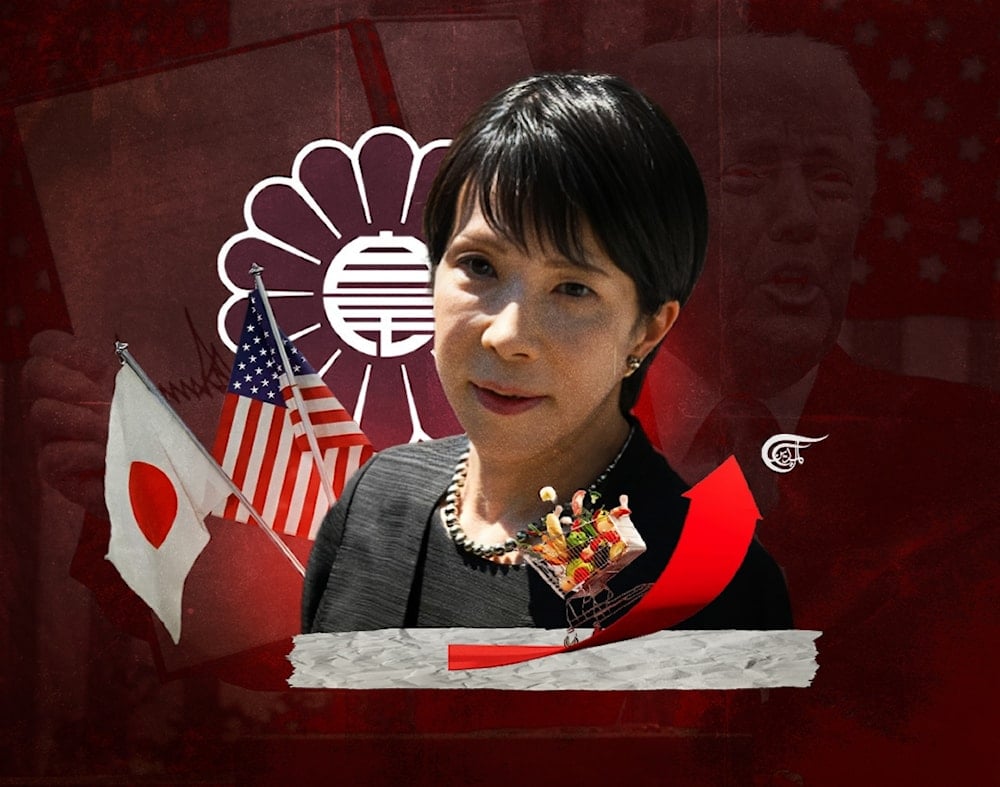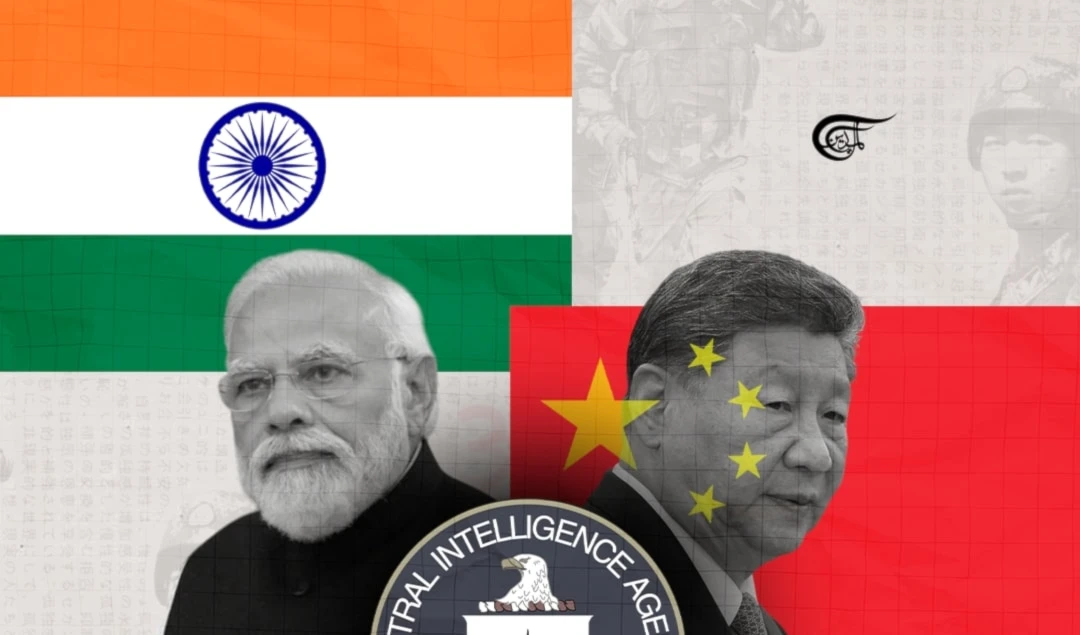The origins of the crisis: An analysis of recent economic and political dynamics in Japan
If Japan reduces its dependence on the United States and improves its relations with China in the future, it could have a positive impact on the trade and economic dynamics throughout the Asia-Pacific region.
-

Japan’s crisis isn’t sudden, it’s been brewing for years (Illustrated by Zeinab al-Hajj for Al Mayadeen English)
Sometimes crises (political or economic) seem sudden, although there are often indicators that suggest they are approaching. In this article, I would like to analyze the contours, outlines, and background information that indicate possible future crises in Japan's economic and political landscape. In my opinion, there are numerous topics for reflection and predictions, and the potential impact of these crises is significant for the entire Asia-Pacific region.
In July 2025, Japan held elections for the House of Councilors. The ruling Liberal Democratic Party (LDP) and the Komeito coalition lost their majority in the upper house. Prior to this, the ruling coalition lost its majority in the lower house (the House of Representatives) following the 2024 general elections. Thus, in a relatively short period of time, Japan's political landscape faced an interesting historical precedent where the ruling party alliance lost its majority in both houses of Parliament within a year.
The electoral failure of the ruling coalition in Japan was not an accidental event. It was influenced by both economic and political factors. However, in a broader sense, it is part of a process of change in the Japanese political landscape.
Let's take a brief look at history to better understand the evolution of certain political forces in Japan. In the autumn of 1945, following the end of World War II, the Liberal Party was established in Japan, led by Ichiro Hatoyama (who had served as a member of the House of Representatives since 1915 and also held the position of Chief Secretary to the Cabinet of Ministers in the late 1920s). In the first post-war elections in April 1946, Hatoyama's party emerged victorious. In principle, this is the moment when the dominance of the party forces that later formed the LDP began on the Japanese political scene.
Between 1948 and 1955, various factions merged to form the Liberal Party, led by Japanese Prime Minister Shigeru Yoshida, the Democratic Party of Japan, led by Ichiro Hatoyama, and several smaller party alliances. In 1955, these parties merged to form the LDP. The purpose of this merger was not only to resolve inter-factional differences but also to create a unified right-wing coalition in Japan to form a government. If we recall the general elections in Japan in 1958, we can see that at that time, there were two main competing parties in the country: the LDP on the right-wing and the Japanese Socialist Party on the left-wing.
Of course, a lot has changed since the 1950s, but some things have remained the same. Until 1993, the LDP had a majority in the Japanese Parliament and was the dominant political party in the country. However, after the 1993 elections, the LDP lost its majority in the House of Representatives and was unable to form a government, which was a unique situation (although the reasons were specific, such as the economic crisis and the decline in the LDP's popularity). Since 1999, the LDP has been in alliance with the Komeito Party, forming a ruling coalition until it was defeated in the 2009 general election and regained its majority in parliament in 2012. However, as mentioned earlier, things changed in 2025.
A review of Japan's complex electoral history reveals that the current results of the 2024 and 2025 Japanese elections are a significant event, similar to the results of the 1993 House of Representatives elections, when the LDP briefly lost its hegemony for the first time. But how can we describe the current dynamics: are these changes temporary and short-lived (similar to the LDP's brief loss of parliamentary majority in 1993), or is there a gradual shift in Japanese politics driven by the looming crisis? And what does all this mean for the Asia-Pacific region?
On October 4, 2025, Japan is expected to hold early elections for a new LDP leadership, following Prime Minister Shigeru Ishiba's announcement on September 7 that he intends to resign as president of the LDP. This is a direct consequence of the recent elections for the House of Representatives and the House of Councilors in Japan.
These are the consequences, but if we talk about the causes of the electoral crisis of the Japanese ruling coalition, then it will not be only about politics, but also about the economy.
I will try to briefly, but with the preservation of the most important details, to characterize the main factors that, in my opinion, are important for understanding the current political and economic dynamics in Japan.
Firstly, in 2025, the Trump administration imposed tariffs on products imported to the United States from many countries, including Japan. This posed a new challenge for the Japanese economy, which relies heavily on exports, particularly for the automotive industry. The new tariffs threatened to reduce exports to the United States and result in significant financial losses for the Japanese automotive industry. In this case, we can see a classic example of modern tariff wars, where the consequences of imposing tariffs can affect a specific industry and lead to long-term negative effects.
The tariffs' impact has also been felt domestically. As is common knowledge, when a manufacturer incurs losses, it tends to seek compensation. Consequently, in September 2025, some Japanese automakers proposed the elimination of the environmental tax imposed on vehicle purchases. This measure aimed to stimulate domestic demand for cars in the face of declining exports. However, the proposal sparked both environmental and economic concerns. There is no final decision, and this example illustrates the uncertainty that has gradually developed in the Japanese government due to the new tariff restrictions.
Secondly, a significant problem was the poor rice harvest, which was primarily caused by the extreme heat. Rice prices in Japanese stores increased throughout 2025, prompting the Japanese government to consider temporarily importing rice from abroad beyond the established quota. The rice situation eventually led to the resignation of Japanese Agriculture Minister Taku Eto on May 21, 2025. Despite this, rice prices remained high, further contributing to the decline in the ruling LDP's popularity.
The inability of the ruling coalition led by the LDP to cope with the consequences of tariff imposition and rising consumer prices (primarily for rice) in the context of general economic stagnation has demonstrated that the old approaches and models in the Japanese economy are no longer effective.
When the LDP was founded in 1955, it was a pro-Western party that united Japanese conservative and center-right forces. Over the decades, the party's ideology has evolved, and so has its factionalism. Today, the LDP consists of several different factions, including conservative, center-right, and far-right factions, and historically, some of these factions have merged or dissolved. The internal divisions within the LDP and the electorate's growing dissatisfaction with them have also contributed to the party's electoral decline. Many voters are strongly opposed to the militaristic rhetoric of far-right factions and calls by some LDP members to revise Article 9 of the Japanese Constitution.
Trump's tariffs on Japan have highlighted another issue: the Japanese economy's dependence on the United States, particularly in terms of Japanese exports. Historically, American big business has been actively involved in economic expansion in Japan, particularly through loans. This has been a form of economic exploitation, as repeatedly stated by Japanese opposition movements and parties in the mid-20th century. For decades, the United States benefited from cheap and high-quality Japanese imports, but in the late 1980s, the country began imposing restrictions on Japanese imports, deeming the share of Japanese goods in the American market "too high". This led to the imposition of high tariffs on Japanese goods by President Ronald Reagan, and in 1985, the United States, the United Kingdom, Japan, West Germany, and France signed the Plaza Agreement, which aimed to gradually devalue the dollar. This agreement was one of the factors that led to the appreciation of the Japanese yen, a decrease in the competitiveness of Japanese goods in foreign markets, a tightening of Japan's monetary policy, and the subsequent economic crisis in Japan in 1992. This example highlights the dangers of tariff wars.
The losses incurred by Japanese automakers due to American tariffs clearly demonstrated that the country's economy faced new and significant challenges. As in the late 1980s, tariffs could cause long-term serious damage to the entire Japanese economy.
In these circumstances, Japan faces the following key challenges: rising consumer prices amid economic stagnation, the negative impact of US tariffs, and the potential risk of reduced export revenues. These factors could lead to a significant economic crisis in the long run.
The electoral results of the recent House of Councilors elections showed that Japanese voters are not satisfied with the economic policies of the ruling coalition, whose popularity continues to decline. The LDP's dominance in Japanese politics is waning, although it still holds a significant number of seats in the parliament (but not an absolute majority). As a result, other Japanese parties are likely to gain more influence, and new political forces and coalitions may emerge.
For many years, Japan's foreign policy has been focused on maintaining close military, economic, and political ties with the United States. However, this reliance has had negative consequences in the face of import tariffs. Will Japan choose a more balanced approach and reduce its dependence on the United States?
In my opinion, this is a question of the distant future, rather than a short- or medium-term perspective. The prerequisites and factors described in my article indicate a potential risk of an economic crisis in Japan, accompanied by growing uncertainty in the domestic political landscape. This helps us understand the origins and genealogy of this potential crisis. However, it is too early to discuss the direct consequences of this emerging crisis. However, one thing is certain: if Japan reduces its dependence on the United States and improves its relations with China in the future, it could have a positive impact on the trade and economic dynamics throughout the Asia-Pacific region. While this scenario may seem unlikely at the moment, it is a possibility for the future.
In the long term, in the next elections to the House of Representatives of Japan, which will be held no later than the autumn of 2028, the Japanese opposition parties may win more seats than the ruling LDP coalition, leading to the first time since 2009 that the Japanese government will not be led by the LDP. It is likely that the popularity of Japan's center-left and left-wing parties, which offer solutions to economic problems, will increase. At least, this prediction seems realistic based on the current situation.

 Alexander Tuboltsev
Alexander Tuboltsev
 10 Min Read
10 Min Read











